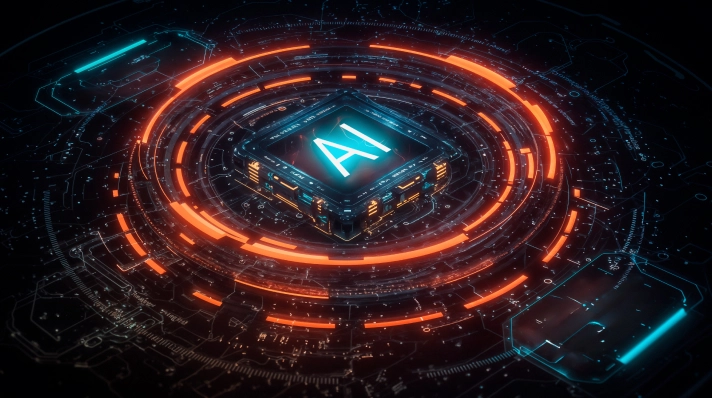Cybersecurity today is not just about defending against attacks. It’s about proactively managing risks in a landscape where threats are growing in volume and sophistication. With data volumes rising by 30% in just the past year and the average cost of a data breach now exceeding $4 million, traditional Security Information and Event Management (SIEM) systems are no longer enough.
Organizations must rethink their approach to incident management. The SIEM Optimization strategy must be robust and modern. This is not just for detecting and responding to threats but also for ensuring seamless coordination across IT, legal, and executive teams. Success depends on reducing complexity, enhancing agility, and leveraging emerging technologies to address today’s most pressing security challenges.
The Challenge of Enhancing Incident Management in Cybersecurity
Organizations today face a dual threat: the rapid increase in cyberattacks and the complexity of managing incidents effectively. The traditional approach to incident response - often fragmented and reactive- no longer matches the scale or sophistication of modern threats. For most companies, the challenge lies not only in detecting attacks but in responding with speed and precision before significant damage occurs.
Many organizations struggle with fragmented tools and siloed systems that slow down response times, leaving them vulnerable. The shortage of skilled cybersecurity talent compounds the issue, stretching teams too thin to handle critical incidents effectively. Lengthy user onboarding times, inefficient alert monitoring, and difficulties in maintaining effective incident response coverage present significant challenges that can undermine an organization's security posture.
Advanced technologies like automation and AI could help streamline processes, but integrating these systems remains a challenge for most. Additionally, incident management requires cross-functional coordination beyond the IT department. Without seamless collaboration across legal, communications, and leadership, responses can be inconsistent and damaging.
To truly enhance incident management, organizations need to invest in cohesive, integrated systems and leverage emerging technologies. It’s not just about responding to threats faster; it’s about doing so strategically to minimize long-term impact.
The iOPEX Solution - Transforming SIEM Capabilities for Greater Efficacy
Security Information and Event Management (SIEM) systems are essential for detecting and responding to threats, but many organizations find their current capabilities fall short in handling today's sophisticated attacks. Traditional SIEM tools, often focused on log aggregation and basic correlation, struggle to deliver actionable insights in real-time. To keep pace with evolving threats, organizations need to transform their SIEM capabilities by moving beyond rule-based alerts to more advanced analytics and machine learning models.
At iOPEX, we understand the complexities of modern cybersecurity challenges. For iOPEX, transforming SIEM capabilities means integrating advanced analytics, leveraging machine learning, and automating key processes to handle today’s complex threat landscape.
With SIEM Optimization, organizations can detect threats faster, enhance scalability, streamline incident management, and reduce false positives.
1. Streamlining User Management
As organizations grow, managing user access, roles, and permissions across multiple systems can become complex and time-consuming. Streamlining this process is essential to reduce security risks, improve operational efficiency, and ensure compliance with regulatory requirements.
For iOPEX, optimizing user management involves automating workflows, centralizing identity and access management (IAM), and implementing role-based access control (RBAC) to minimize manual intervention. By simplifying user provisioning and de-provisioning, organizations can ensure that the right people have the right access at the right time—reducing the risk of unauthorized access and improving overall security posture.
In addition, centralized management tools can provide real-time visibility into user activities, making it easier to detect anomalies and enforce compliance. By streamlining user management, businesses not only enhance security but also free up resources, allowing IT teams to focus on higher-value tasks.
Result:
- Time to Onboard: iOPEX reduces onboarding time to an average of less than 4 days, significantly faster than the industry benchmark of 7.5 days. By improving the baseline by 30% when utilizing super user access, we ensure that organizations can integrate new team members swiftly and effectively.
- Authorization Update Time: iOPEX ensures user access workflows are updated within 4-6 days, surpassing the market standard of 30 days (IDC).
- Critical Deactivation Efficiency: Inactive accounts are deactivated within a day for critical requests, aligning with best practices and reducing security risks.
2. Optimizing Rotation and Scheduling
Efficient rotation and scheduling are vital to ensuring continuous coverage in IT operations and security management. As organizations scale, the challenge of balancing workloads, preventing burnout, and maintaining consistent coverage becomes more complex. Optimizing these processes allows teams to remain productive while ensuring critical functions are never left unattended.
At iOPEX, optimizing rotation and scheduling begins with leveraging automation tools that dynamically allocate resources based on real-time demand. By utilizing AI-driven systems, organizations can forecast workloads and adjust schedules automatically, ensuring that shifts align with operational needs. Flexible scheduling models—such as rotating shifts and staggered break times—help maintain continuous coverage without overburdening teams.
Cross-training employees across multiple roles further enhances flexibility, allowing organizations to shift resources where they’re needed most during peak times. This structured approach ensures not only full coverage but also improves overall responsiveness by deploying the right expertise at the right moments. Through these methods, businesses can achieve greater operational efficiency while reducing team fatigue, enhancing both performance and resilience.
Result:
- Shift Coverage Rate: iOPEX ensures 100% shift coverage with a 10% buffer, reducing shift shrinkage to under 8%—outperforming the industry average of 92% coverage.
- Burnout Reduction: By designing effective rotation systems, iOPEX addresses burnout concerns and enhances operational resilience with <8% shrinkage.
3. Enhancing Alert Monitoring
Alert monitoring plays a critical role in identifying and addressing potential security threats, but traditional systems often generate overwhelming volumes of alerts—many of which are false positives. This leads to inefficiencies, with teams spending more time filtering through noise than addressing real issues. For modern organizations, enhancing alert monitoring is key to improving incident response times and maintaining a strong security posture.
At iOPEX, the focus on improving alert monitoring begins with integrating intelligent automation and machine learning. These technologies can analyze vast amounts of data in real-time, prioritize critical alerts, and reduce the volume of low-risk or duplicate notifications. This allows security teams to focus on high-priority incidents without being bogged down by unnecessary distractions.
Correlating alerts across systems is another crucial step in SIEM Optimization. By centralizing monitoring and integrating tools into a single dashboard, organizations can achieve a unified view of their security environment. This consolidated approach not only speeds up response times but also helps teams quickly identify patterns and potential threats that might otherwise go unnoticed.
Result:
- Alert Categorization Accuracy: iOPEX achieves a 99.99% accuracy rate in categorizing alerts into Critical, Warning, and Info.
- Response Time to Critical Alerts: Critical alerts are addressed within 5 minutes, ensuring timely action and adherence to crucial timelines.
- Routing Success Rate: Over 90% accuracy in routing alerts to the appropriate response teams, improving the efficiency of alert handling processes.
4. Seamless Integration with Existing Systems
For any new technology or solution to deliver its full potential, seamless integration with existing systems is essential. Many organizations face challenges when trying to implement new tools, as legacy infrastructure and disparate platforms create silos that hinder performance and visibility. Ensuring that new technologies work harmoniously with existing systems is crucial for maintaining efficiency and preventing disruptions.
At iOPEX, seamless integration begins with a thorough assessment of the current IT landscape. By understanding the intricacies of the organization's existing systems, iOPEX develops tailored integration strategies that minimize disruption and maximize interoperability. Leveraging APIs and middleware solutions, we ensure that new tools integrate smoothly into established workflows without requiring a complete overhaul of infrastructure.
Automation further streamlines this process, allowing real-time data synchronization and smooth communication between systems. This eliminates the need for manual data transfers and reduces the risk of human error. Additionally, by ensuring that all systems—new and old—can communicate effectively, organizations can achieve a more cohesive and scalable IT environment, enabling faster decision-making and more efficient operations.
Result:
- API Integration Success Rate: iOPEX boasts a >92% success rate in API integrations, automating data exchange and improving operational efficiency.
- SSO and SCIM Provisioning: With 82% SSO and 79% SCIM adoption rates (Forrester, Gartner), iOPEX simplifies user access and provisioning processes, enhancing user management and operational efficiency.
Paving the Path to Resilience
Building resilience in today’s rapidly evolving digital landscape requires more than just a collection of tools or reactive measures. It demands a strategic, integrated approach that aligns technology, people, and processes toward a common goal—sustained operational continuity and security. As cyber threats grow in complexity, organizations must focus on proactive cyber security solutions, such as enhanced SIEM capabilities, optimized alert monitoring, and streamlined user management, to safeguard their assets.
At iOPEX, we understand that resilience is not a static achievement but an ongoing process of adaptation and improvement. By leveraging automation, advanced analytics, and seamless integration with existing systems, organizations can position themselves to not only withstand disruptions but to emerge stronger. The key to resilience lies in the ability to anticipate, respond, and recover quickly—transforming challenges into opportunities for growth and innovation.
By adopting a holistic, forward-looking approach, businesses can pave the path to resilience, ensuring they remain agile and secure in the face of future uncertainties.










